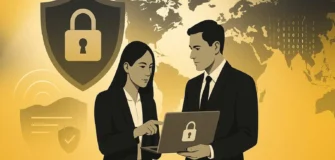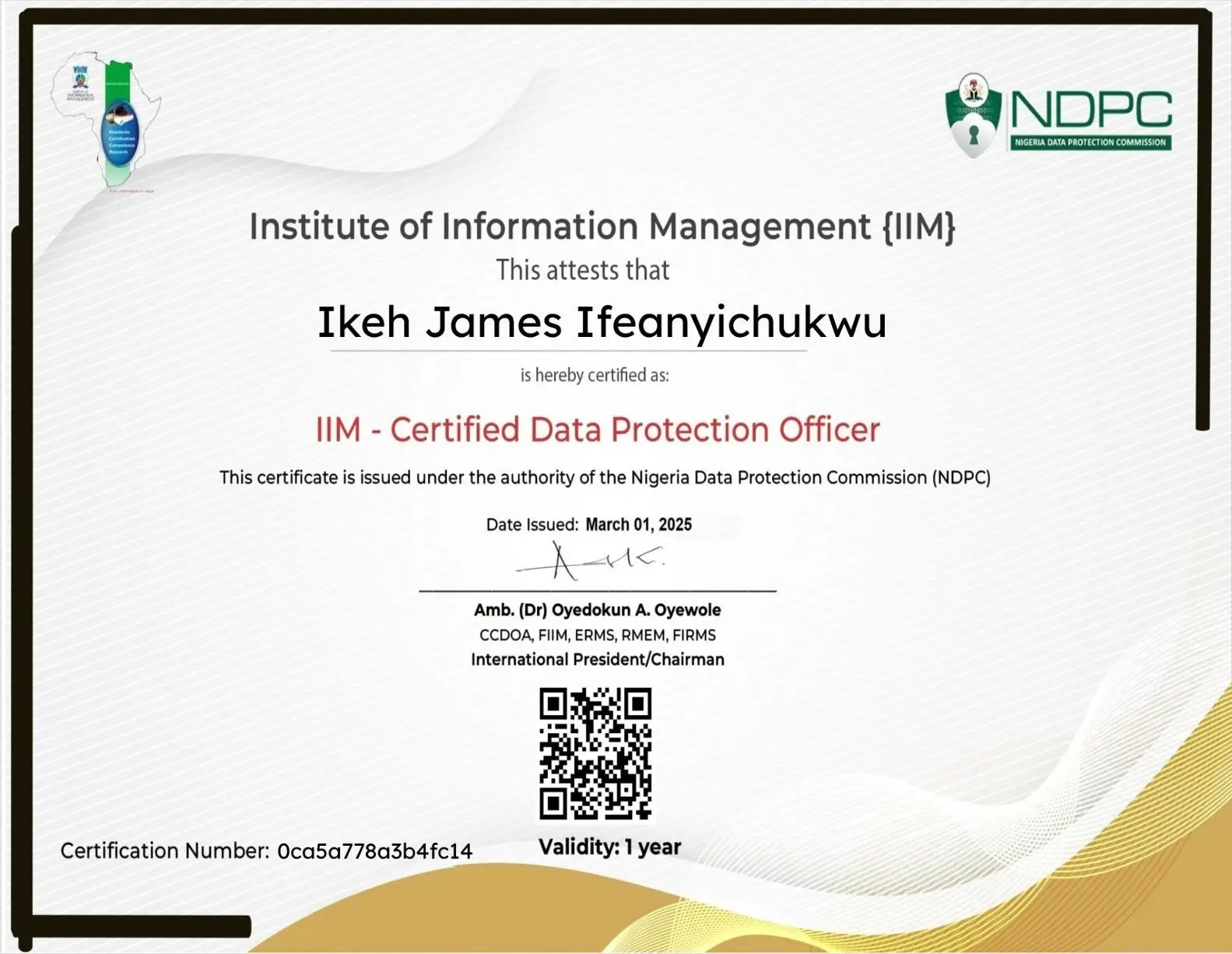Cloud Chaos & Data Privacy: Lessons from the AWS US-EAST-1 Outage
Share

When the Cloud Coughs, the Internet Chokes
On October 20, 2025, Amazon Web Services’ US-EAST-1 region — the digital heart of the internet — went dark.
What began as a network disruption spiraled into a global cloud blackout, crippling apps like Venmo, Zoom, Reddit, and Snapchat for hours.
For billions of users, it was an inconvenience.
For data controllers and privacy professionals, it was a wake-up call.
Because when your cloud collapses, so does your data availability, your compliance posture, and your users’ trust.
The AWS Outage: A Chain Reaction of Digital Dependence
According to Amazon’s post-incident report, the outage originated from a faulty internal network monitoring subsystem that triggered widespread DNS failures.
This prevented AWS-hosted apps from reaching core services like S3 (storage), DynamoDB (databases), and EC2 (servers).
Within minutes:
- Payment apps froze transactions.
- Communication tools stopped syncing.
- Even corporate intranets went offline.
It wasn’t just downtime — it was data paralysis.
The US-EAST-1 region, based in Northern Virginia, is AWS’s busiest hub — powering much of the internet’s backend. When it sneezes, everyone catches a cold.
What the Outage Exposed: The Fragility of Cloud Dependence
This latest AWS disruption isn’t the first — and it won’t be the last.
But it highlighted something most businesses ignore: your cloud provider’s uptime is part of your privacy compliance.
1. Data Availability = Data Protection
Under GDPR (Article 32) and Nigeria’s NDPA 2023, data controllers must ensure the availability and resilience of personal data processing systems.
If a cloud outage renders data inaccessible, regulators can view it as a security failure, not just a technical one.
In short: a cloud outage can be a data protection incident — even without a breach.
2. Shared Responsibility, Real Accountability
AWS promises world-class infrastructure, but its shared responsibility model makes one thing clear:
You — the data controller — remain accountable for your users’ data.
So when an outage hits, regulators don’t call Amazon first — they call you.
Controllers must:
- Conduct regular risk assessments on their cloud partners.
- Review Service Level Agreements (SLAs) and Data Processing Agreements (DPAs).
- Document contingency procedures that ensure continuity.
Your defense can’t be, “AWS went down.” That excuse won’t hold in a regulatory inquiry.
3. Transparency is the New Trust Currency
During the outage, many companies went silent, leaving users in confusion.
That’s a mistake.
Privacy laws — and common sense — demand open communication during disruptions.
Controllers should:
- Publish real-time updates on outage impact.
- Confirm that no personal data was compromised.
- Give users clear recovery timelines.
Transparency during downtime often does more for trust than uptime itself.
The Compliance Lens: Global Data Laws React
| Law / Framework | Key Obligation | Implication During AWS Outage |
|---|---|---|
| NDPA (Nigeria) | Ensure data availability & integrity | Inaccessible personal data may trigger NDPC review |
| GDPR (EU) | Maintain system resilience | Could qualify as a personal data incident |
| CCPA (US) | Ensure consumer data access rights | Temporary noncompliance during outages |
| ISO 27001 | Business continuity (A.17) | Requires tested, documented disaster recovery |
| CIS Controls | Continuous backup & redundancy | Single-region hosting violates best practice |
If your business couldn’t operate or retrieve user data during the AWS downtime, you already have a compliance problem.
Building Resilient Data Systems: What Smart Businesses Are Doing Now
| Lesson | Actionable Strategy | Result |
|---|---|---|
| Stop trusting one region | Mirror data across multiple AWS zones | Zero single points of failure |
| Think multi-cloud | Host critical workloads on Azure or Google Cloud too | True continuity |
| Keep local backups | Encrypt and store key data offline or in hybrid storage | Guaranteed availability |
| Automate incident response | Use monitoring tools like Datadog or New Relic | Early detection of cloud issues |
| Rehearse your response | Run quarterly outage simulations | Audit-proof disaster readiness |
The Human Factor: Communication Over Silence
When the AWS outage hit, platforms that responded quickly — acknowledging downtime and assuring users their data was safe — emerged with minimal backlash.
Those that stayed quiet?
They fueled speculation about data loss and cyberattacks.
In the privacy world, narrative control is everything.
If you don’t communicate fast, someone else will — often inaccurately.
A Real-World Snapshot: SMEs Hit Hardest
For large enterprises, redundancy saved the day.
But for small and mid-sized businesses (SMEs), the outage exposed a blind spot: cost-cutting at the expense of resilience.
Some lost client data access for over six hours; others couldn’t process sales or deliver services.
A few even breached client contracts that promised “24/7 system availability.”
The takeaway?
Data protection isn’t just about keeping hackers out — it’s about keeping your business running.
Key Takeaways
- Cloud convenience doesn’t equal compliance.
- Outages can trigger data protection obligations.
- Your cloud strategy must include redundancy and backup.
- Transparency and communication are critical to user trust.
- Audit, test, and document everything — before regulators ask.
Conclusion: The Cloud Is Powerful, But Not Perfect
The AWS US-EAST-1 outage of 2025 reminded the world that even tech giants have limits.
And while Amazon’s engineers restored service swiftly, the incident exposed a larger truth:
Cloud reliability is not a given — it’s a responsibility.
For data controllers, privacy officers, and CIOs, this is the time to build resilience into compliance.
Because in a world where everything depends on the cloud, the only real security is being ready for failure.
FAQs
1. Was personal data exposed in the AWS outage?
No, there’s no evidence of a breach — but access to data was temporarily disrupted.
2. Can downtime qualify as a data protection incident?
Yes. Under GDPR and NDPA, prolonged unavailability of personal data can be reportable.
3. How can small businesses prepare for cloud failures?
Use hybrid backups, diversify providers, and test disaster recovery plans regularly.
4. What should companies tell users during outages?
Be transparent. Confirm data safety and give expected recovery timelines.



























